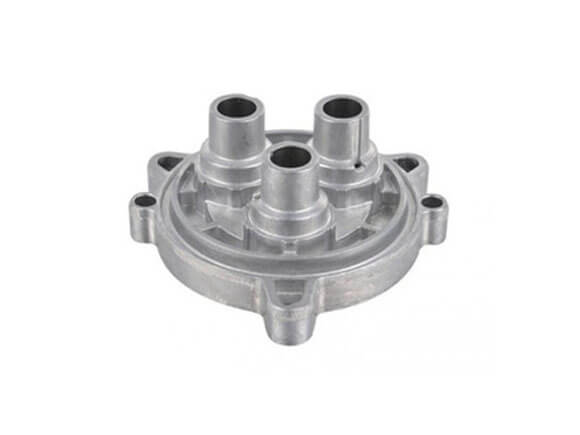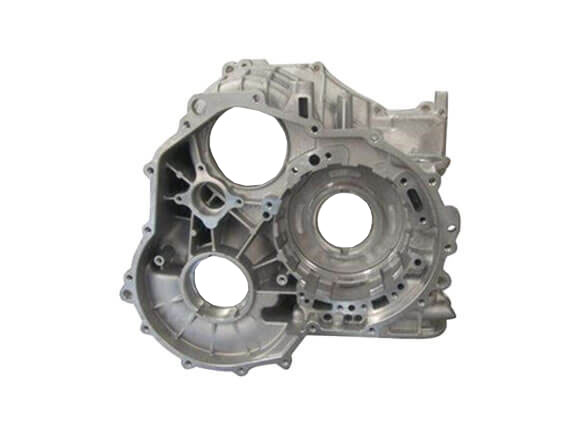Why Aluminum Casting Company is Key in the Marine Sector
Aluminum Casting Explained: Trick Facts and Insights for Sector Professionals
Aluminum casting functions as a vital procedure in modern manufacturing, shaping elements throughout different sectors. Its diverse methods, such as sand and die casting, deal with various manufacturing requirements. The one-of-a-kind buildings of aluminum alloys boost their applicability, yet tests remain in keeping top quality and efficiency. Comprehending these aspects is crucial for sector experts. What are the most up to date innovations and best practices that can further optimize this process?
Review of Aluminum Casting Processes

Crucial element of aluminum casting processes include the prep work of molds, which may be made from sand, steel, or ceramic products, depending on the planned use. Additionally, temperature control is vital to assure proper melting and solidification of aluminum.
The casting process permits elaborate layouts and can accomplish high degrees of dimensional precision. Once cooled down, the castings might undertake ending up operations such as machining or surface area therapy to meet details performance requirements. Generally, aluminum casting acts as a flexible production method, efficiently fulfilling the varied needs of different markets.
Sorts Of Aluminum Casting Methods
In the domain name of aluminum casting, numerous techniques are used to attain various results. Sand casting strategies offer flexibility and cost-effectiveness for complicated shapes, while die casting procedures use high precision and effectiveness for automation. Understanding these methods is necessary for choosing the appropriate approach based upon project demands.
Sand Casting Methods
Sand casting techniques represent a fundamental approach in aluminum casting, where sand is made use of as a mold and mildew product to shape molten steel. This procedure entails producing a pattern from the desired component, which is then placed in a sand mixture to form a mold. The sand is compressed around the pattern, and after removal, it produces a cavity in the form of the component. Molten aluminum is put into this dental caries, allowing it to strengthen and cool down. One significant benefit of sand casting is its convenience; it can suit large elements and complex shapes. Furthermore, the materials made use of are reasonably affordable, making it an available alternative for numerous production applications in the aluminum industry.
Die Casting Processes
Die casting processes are a noticeable technique for shaping aluminum elements, making use of high-pressure methods to force molten metal into specifically crafted mold and mildews. This process is particularly preferred for its capacity to generate intricate forms with tight resistances and a smooth finish. There are two main kinds of die casting: warm chamber and cold chamber. Hot chamber die casting is ideal for steels with low melting factors, allowing for faster production rates. Conversely, cold chamber die casting is optimal for greater melting point steels, requiring a different melting furnace. Both approaches improve efficiency and lower product waste, making them necessary in auto, aerospace, and durable goods markets. Understanding these processes helps professionals select one of the most appropriate method for their details applications.
Material Properties of Aluminum Alloys

Strength and Resilience
Strength and durability are essential features of aluminum alloys that make them suitable for different casting applications. These products display a favorable strength-to-weight proportion, permitting for the production of lightweight yet durable components. When it come to tensile stamina, details aluminum alloys can be crafted to stand up to substantial tons without flawing. This residential property is especially essential in industries such as aerospace and auto, where efficiency and safety and security are vital. In addition, aluminum alloys commonly maintain their mechanical properties under varied temperature problems, ensuring regular efficiency. The inherent ductility of these alloys also enables reliable shaping during the casting process, making it simpler to generate complicated geometries. Overall, the stamina and longevity of aluminum alloys contribute considerably to their extensive use in advanced applications.
Rust Resistance Characteristics
While aluminum alloys are valued for their strength and lightweight residential properties, their corrosion resistance is one more essential feature that boosts their suitability for different applications. Aluminum normally forms a safety oxide layer when revealed to wetness, which aids to protect against further oxidation. This inherent building makes aluminum alloys especially beneficial in atmospheres prone to rust, such as industrial and marine settings. In addition, various alloy structures can influence resistance degrees, with certain alloys particularly engineered to improve this characteristic. Therapies like plating can further improve rust resistance by enlarging the oxide layer. As a result, recognizing the deterioration resistance of aluminum alloys is necessary for industry professionals when selecting products for projects requiring longevity and durability in challenging environments.
Advantages of Aluminum Casting in Production
Aluminum casting offers numerous benefits in manufacturing, making it a preferred option for different markets. One substantial advantage is its lightweight nature, which contributes to lowered transportation costs and improved power effectiveness in final result. Aluminum's outstanding thermal and electrical conductivity boosts functionality in applications needing warm dissipation or electric transmission.
The product's ability to be cast right into detailed forms enables style flexibility, decreasing the need for additional machining procedures. In enhancement, aluminum casting displays remarkable corrosion resistance, bring about longer item life expectancies and reduced maintenance prices.

Usual Applications of Aluminum Castings
The flexibility of aluminum casting allows its extensive usage across numerous industries. Usual applications include vehicle components, where light-weight and corrosion-resistant elements, such as engine blocks visit their website and transmission housings, enhance car efficiency. In the aerospace field, aluminum castings are made use of for architectural components, using strength without including substantial weight.
Additionally, the electrical industry gain from aluminum castings in manufacturing rooms and warm sinks, where thermal conductivity is necessary. The durable goods industry also incorporates aluminum castings in items like pots and pans, furniture, and attractive products, incorporating visual appeals with functionality.
The construction sector utilizes aluminum spreadings for building elements, window structures, and fixtures, which give resilience and layout versatility. In general, the diverse applications of aluminum castings emphasize their value in modern production, contributing to improvements in efficiency and item design throughout multiple fields.
Developments and Technical Advancements
As industries proceed to develop, developments in aluminum casting technology are changing manufacturing processes and item abilities. Advancements in 3D printing and additive production have allowed the production of intricate geometries that were formerly impossible to attain with standard approaches. These technologies permit quick prototyping, minimizing preparations and costs.
In addition, improvements in mold layout and materials have boosted the casting process by increasing effectiveness and lowering waste. The assimilation of clever manufacturing methods, such as IoT tools and real-time information analytics, enables far better monitoring and optimization of production parameters, resulting in better outcomes.
Furthermore, advancements in aluminum alloys give enhanced strength, corrosion resistance, and lightweight residential or commercial properties, accommodating the growing needs in aerospace and automobile sectors. Jointly, these advancements are not only enhancing productivity however likewise satisfying the rigorous requirements of modern engineering applications.
Ideal Practices for High Quality Control in Aluminum Casting
Ensuring premium outputs in aluminum casting calls for adherence to best methods that incorporate different stages of the production procedure. Detailed product assessment is important to validate the top quality of aluminum alloys used, as contaminations can significantly impact the last item. Carrying out specific melting and pouring techniques minimizes problems; keeping suitable temperature levels prevents oxidation and advertises uniformity.
Furthermore, mold and mildew layout plays an important role; utilizing computer-aided layout (CAD) can boost precision and decrease human error. Normal tracking of the cooling process is critical to avoid bending and contraction. Additionally, using non-destructive testing approaches, such as ultrasonic or X-ray assessments, helps identify inner defects without harming the components.
Developing a comments loop with designers and operators promotes constant enhancement, guaranteeing that high quality control steps advance along with technical improvements. By adhering to these finest techniques, manufacturers can boost the reliability and efficiency of aluminum spreadings.
Regularly Asked Questions
What Are the Ecological Influences of Aluminum Casting?
The environmental influences of aluminum casting consist websites of considerable energy consumption, greenhouse gas exhausts, and prospective water air pollution from factory procedures. In addition, bauxite mining for aluminum ore can result in habitat damage and dirt degradation.
Just How Does Aluminum Casting Compare to Various Other Steel Casting Processes?
Aluminum casting usually offers advantages in lightweight components and rust resistance compared to various other processes, such as iron or steel casting, which may offer higher stamina but result in heavier and much less corrosion-resistant items. - Precision aluminum casting
What Are Typical Flaws in Aluminum Castings and Their Causes?
Common issues in aluminum spreadings include porosity, shrinking, and additions. Causes often come from incorrect putting methods, poor mold and mildew style, or contamination of the molten metal, affecting the end product's honesty and performance.
What Safety Preventative Measures Should Be Taken Throughout Aluminum Casting?
Throughout aluminum casting, vital safety and security preventative measures consist of wearing safety gear, ensuring appropriate air flow, maintaining a clean workspace, dealing with liquified metal with care, and complying with well-known protocols to decrease dangers of burns, inhalation threats, and crashes.
How Can I Boost the Efficiency of My Aluminum Casting Workflow?
To improve efficiency in aluminum casting procedures, one need to enhance mold design, simplify product handling, employ automated procedures, carry out normal maintenance on tools, and buy employee training to improve abilities and performance.
Different approaches exist, aluminum casting includes a number of main procedures that cater to different have a peek here applications and needs. Secret aspects of aluminum casting processes consist of the prep work of mold and mildews, which may be made from sand, steel, or ceramic materials, depending on the planned use. Sand casting strategies represent a basic approach in aluminum casting, where sand is utilized as a mold product to shape liquified metal. As sectors continue to develop, advancements in aluminum casting technology are transforming production processes and product abilities. Making certain top quality results in aluminum casting needs adherence to best practices that encompass numerous stages of the manufacturing process.